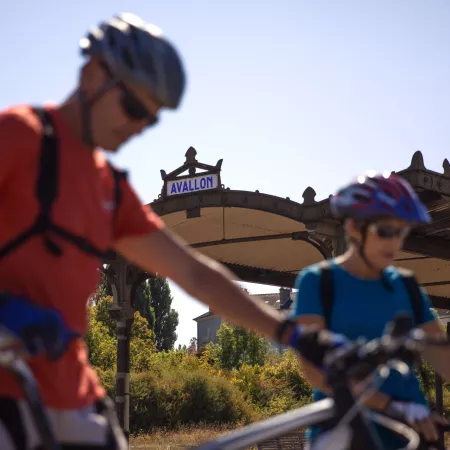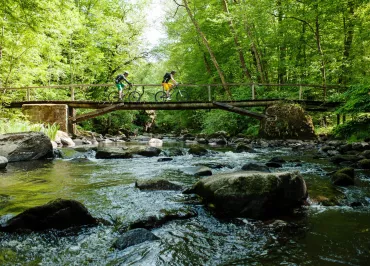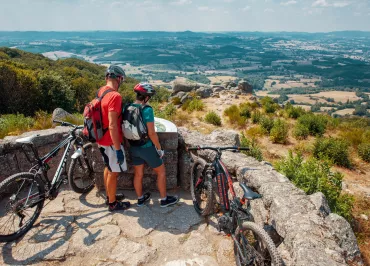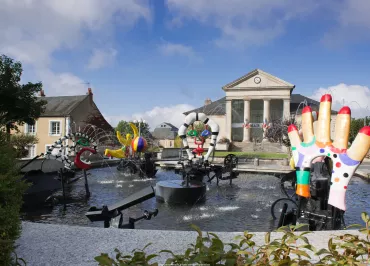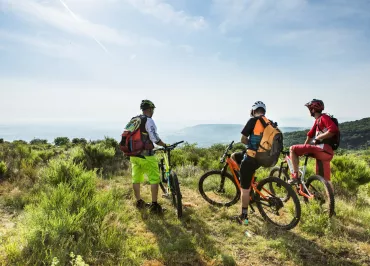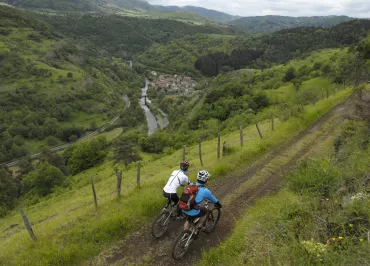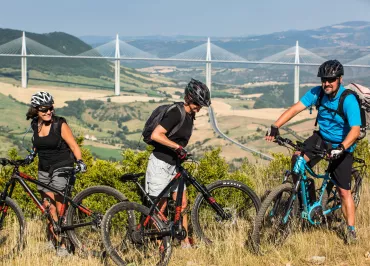How to get to the GTMC?
Joining the GTMC route
As the whole route is 1,400km long, it’s unlikely that you intend to cycle along it in its entirety!
That’s not a problem, as many linking stages are accessible by train, while there are many places where the GTMC intersects with other routes, making it easy to join the GTMC at many different points.
Here is the list of the main access points to the GTMC (going north to south) and of the SNCF train stations that may prove useful along the route:
- Avallon (SNCF train station)
- Château-Chinon
- Etang-sur-Arroux (SNCF train station)
- Autun (SNCF train station)
- Moulins (SNCF train station)
- Clermont-Ferrand (SNCF train station)
- Neussargues (SNCF train station)
- Saint-Flour (SNCF train station)
- Langeac (SNCF train station)
- Saint-Chély d'Apcher (SNCF train station)
- Florac
- Le Vigan
- Millau (SNCF train station)
- Lunas (SNCF train station)
- Clermont-l'Hérault
- Agde (SNCF train station)
At the bottom of this page, find all the linking stages (signposted with GTMC signs) via which you can join or leave the Grande Traversée du Massif central à VTT.
These ‘gateways’ to the route are easily accessible by train or by bus. Or you might decide to reach one of these gateways by car, returning to the relevant one by train or by bus at the end of your trip along the GTMC.
Getting around with your mountain bike on trains and buses
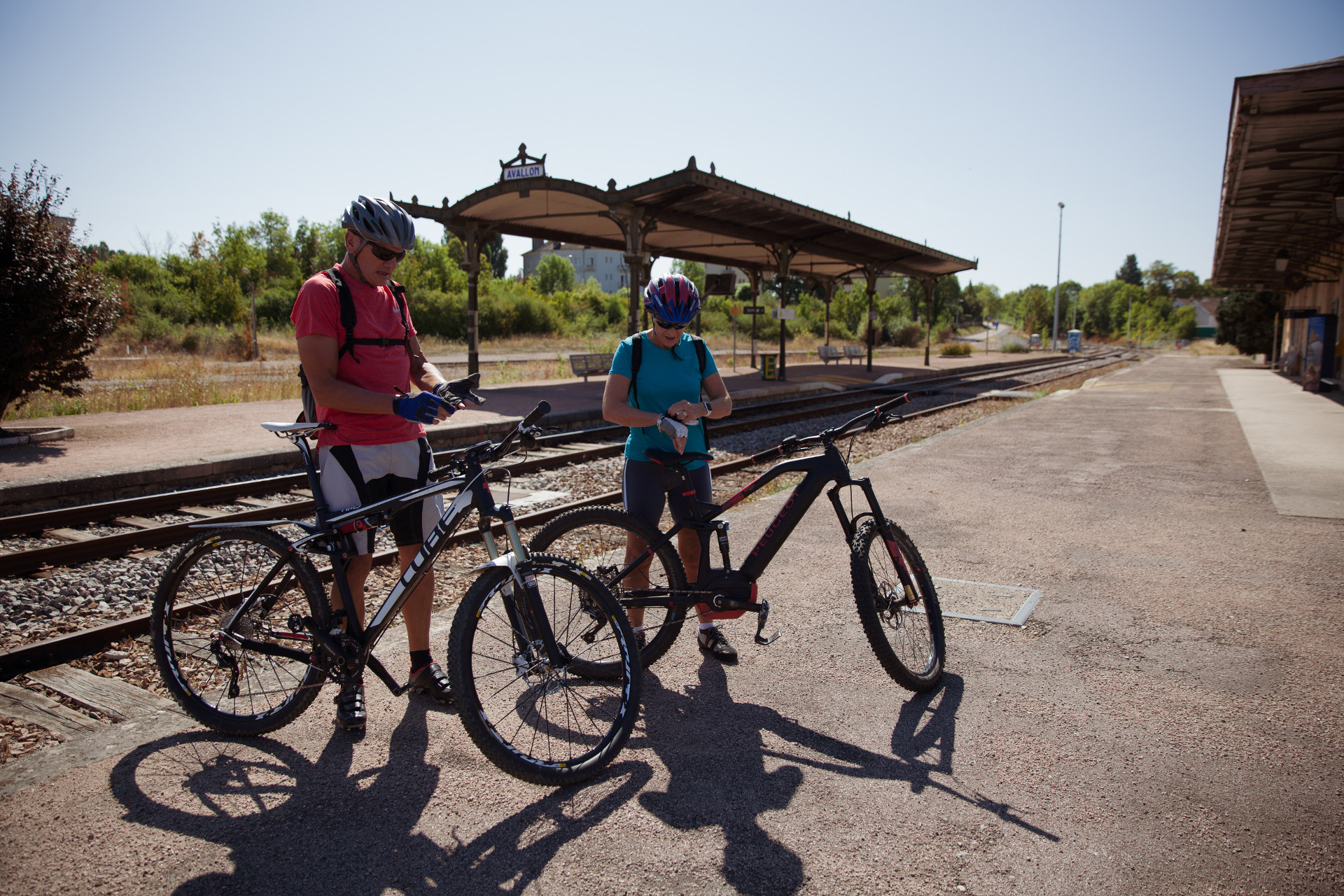
Getting around with your mountain bike on trains and buses can sometimes prove complicated, as the SNCF French national rail service and bus companies now have strict rules about taking bikes on board.
Here’s our advice so that your trip with your mountain bike goes as smoothly as possible:
- TER regional trains accept bicycles (except at very busy times) without any reservation necessary, plus you do not need to dismantle your bike. You can reserve a place for your bicycle in certain coaches on certain trains.
- Consider other passengers, and before putting your mountain bike in the train, make sure it is as clean as possible, both for the comfort of fellow travellers and for the good of your bike.
- On Intercités trains, it is generally possible to transport your bicycle as long as you indicate the fact at the time of purchasing your ticket. The transportation of your bicycle will cost an extra €10 on top of the ordinary ticket price.
- On TGV high-speed trains, there are two possibilities: either reserve a spot in advance for you bicycle via the SNCF website, at a cost of €10 a bike; or avoid that cost by dismantling your bicycle and taking it onboard packed in its bike cover.
- The buses serving the GTMC regions do not carry special racks for bicycles at present. That means that you will have to dismantle your bicycle and pack it in its bike cover to take it onboard.
How to get back to your point of departure?
To work out the best way to get around by train with your bike without having to put it in a bike cover, you might consult the website for DeutscheBhan which can help you calculate the best way for you and your bike
Pour connaître le meilleur moyen de se déplacer en train avec son vélo sans le mettre dans une housse, vous pouvez consulter le site internet de la DeutchBhan qui permet de calculer la meilleure possibilité pour vous et votre vélo
Some examples of train travel times using either SNCF regional TER trains or Intercités trains (available in both directions):
- Paris > Avallon (direct; c.3hrs)
- Lyon > Avallon (1 change; c.5hrs)
- Lyon > Autun (1 change; c.3hrs 30mins)
- Autun > Moulins (2 changes; c.2hrs 30mins)
- Moulins > Clermont (direct; c.1hr)
- Lyon > Clermont (direct; c.2hrs 30mins)
- Clermont > Agde (1 change; c.6hrs 30mins)
- Clermont > Neussargues (direct; c.1hr 30mins)
- Clermont > Langeac (direct; c.1hr 30mins)
- St-Chély-d'Apcher > Millau (direct; c.2hrs)
- Millau > Agde (1 change; c.2hrs 30mins)
